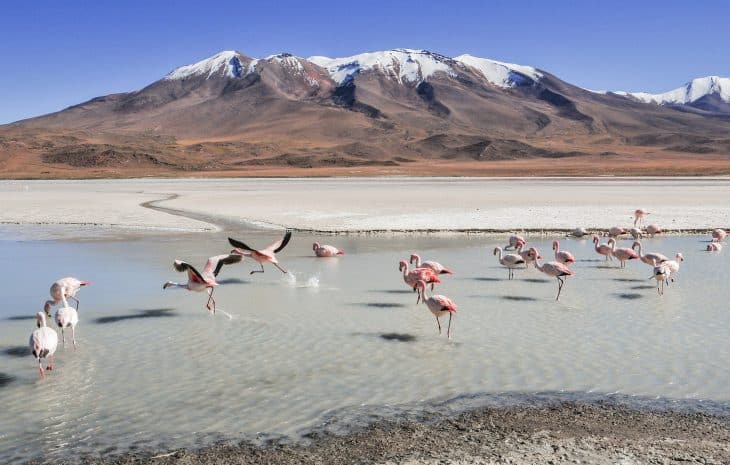
Deep within the forests of South America lies the paradise of Bolivia. It is home to unique landmarks and rich culture. Find out what makes this country stand out with these Bolivia facts.
- In 2009, Bolivia’s name changed from “Republic of Bolivia” to “Plurinational State of Bolivia.”
- Bolivia is a country in the west-central region of South America.
- Before the Spanish conquests, Bolivia was a part of the Inca Empire.
- Bolivia covers a total land area of 1,098,581 square km.
- As of March 2020, Bolivia’s population is at 11,627,330.
- During Spanish rule, Bolivia was called ‘Upper Peru.’
- Bolivia became independent on August 6, 1825.
- The constitutional capital of Bolivia is Sucre which is also the location of the Supreme Court.
- The administrative capital of Bolivia is La Paz.
- Bolivia uses boliviano as currency.
- A primate (bishop) heads Bolivia’s church hierarchy in Sucre.
- For children aged 6-13, primary education is free and compulsory.
- Secondary education in Bolivia lasts up to 4 years, but it is not compulsory.
- In Bolivia, all men aged 18-22 are obligated to render military service.
- As per UNESCO, Bolivia’s literacy rate is at 92.46%.
- The name Bolivia came from the country’s first president, Simon Bolivar.
- Bolivia is almost three times bigger than the U.S. state of Montana.
- Of all the roads in Bolivia, only 11% are paved.
- Bolivia’s National Congress building has a clock running backwards, reminding citizens to think differently.
- The rainforests of Bolivia house 40% of the world’s animal and plant life.
Bolivia shares its north and east border with Brazil.
Paraguay lies at its southeast, Argentina to its south, Chile to its southwest-west, and Peru to its northwest.
Guinea pigs are a local delicacy in Bolivia.
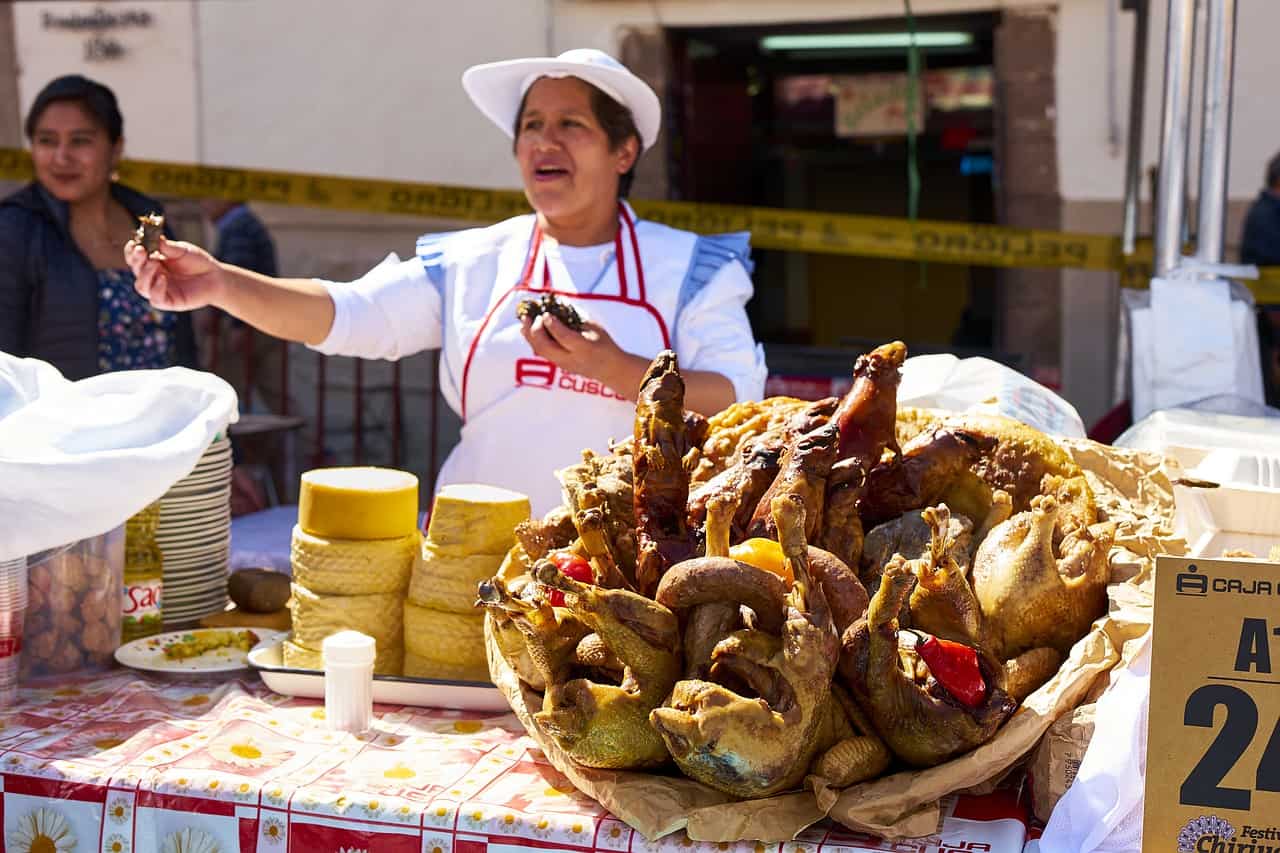
One of the more shocking Bolivia facts is that guinea pigs are served as a delicacy here. Referred to by locals as “Cuy,” guinea pig is served frito (fried), asado (broiled) or al horno (roasted). Guinea pig meat is rich in protein and low in fat and cholesterol. Taste-wise, it has been compared to rabbit and chicken meat.
Pink dolphins are native to Bolivia.
Also known as the Bolivian Bufeo, these dolphins reside in the Amazon. The species have been declared a Natural Heritage of Bolivia.
Bolivia has 37 official languages.
It includes the Spanish language and 36 indigenous languages. Prior to the 2009 constitution, only Aymara, Quechua, and Spanish were officially recognized.
Bolivia is a landlocked country.
Since the country lost to Chile in the War of the Pacific (1879-1884), it lost its territory on the Pacific coast. Still, Bolivia formed agreements with neighboring countries, granting them at least indirect access to the Pacific and Atlantic oceans.
Bolivia is the highest country in South America.
It is also the most isolated country in the region. Moreover, Bolivia joins Paraguay in being the only 2 landlocked countries in South America.
⅓ of Bolivian occupies the Andes Mountains.
Most of Bolivia’s largest cities lie there. As the country is traditionally regarded as a highland, it attracted a significant portion of the commercial, business, and mining investments of the country.
La Paz, Bolivia is the highest administrative capital of the world.
It houses the government’s executive and legislative branches. La Paz rests at 11,975 ft above sea level with one airport and a population count of nearly 2 million.
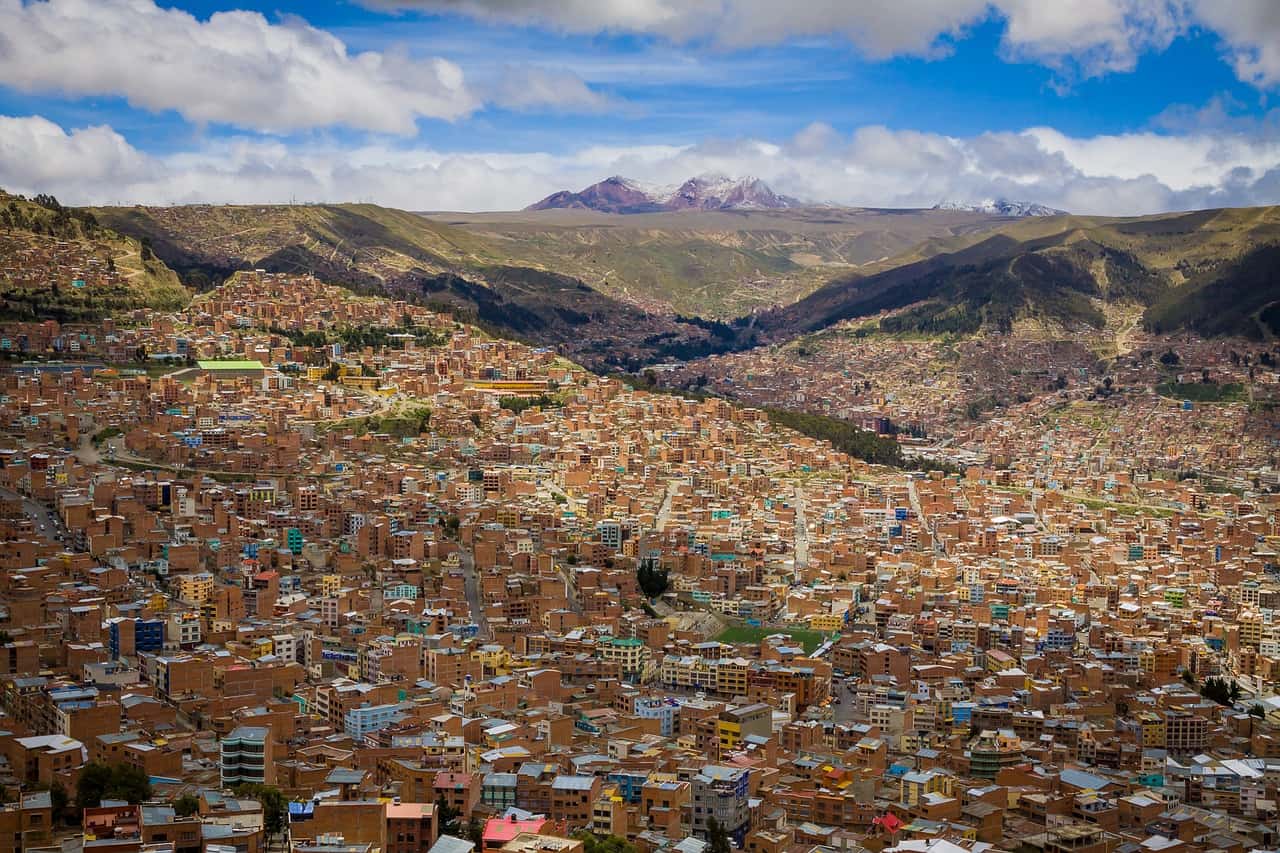
Bolivia has more than one capital city.
When asked about their capital, Bolivians still mainly refer to La Paz since it houses the country’s seat of government and finance center. However, Sucre is Bolivia’s official capital.
Bolivia is home to the world’s highest large city.
El Alto, Bolivia stands at an elevation of 4,150 m or 13,615 ft with a population of 1,184,942. The ‘large’ definition is based on having a population greater than 100,000.
Two great parallel ranges dominate the Andes system in Bolivia.
The Andean mountain range spans the entire western part of South America. In Bolivia, the Andes reaches its greatest breadth and complexity. The first system is the Cordillera Occidental. It lies west along the shared border with Chile where it covers several active volcanoes and the Uyuni Salt Flat.
The highest peak of Bolivia is at Mount Sajama.
The highest part of Cordillera Occidental is Mount Sajama, which stands at a height of 6,542 meters or 21,463 feet.
Cordillera Oriental is the second Andes system.
It keeps to the east while its northern section, the Cordillera Real or ‘Royal Range,’ lies near La Paz. The Cordillera Oriental boasts of its impressive line of snowcapped peaks with some exceeding 6,100 meters or 20,000 feet.
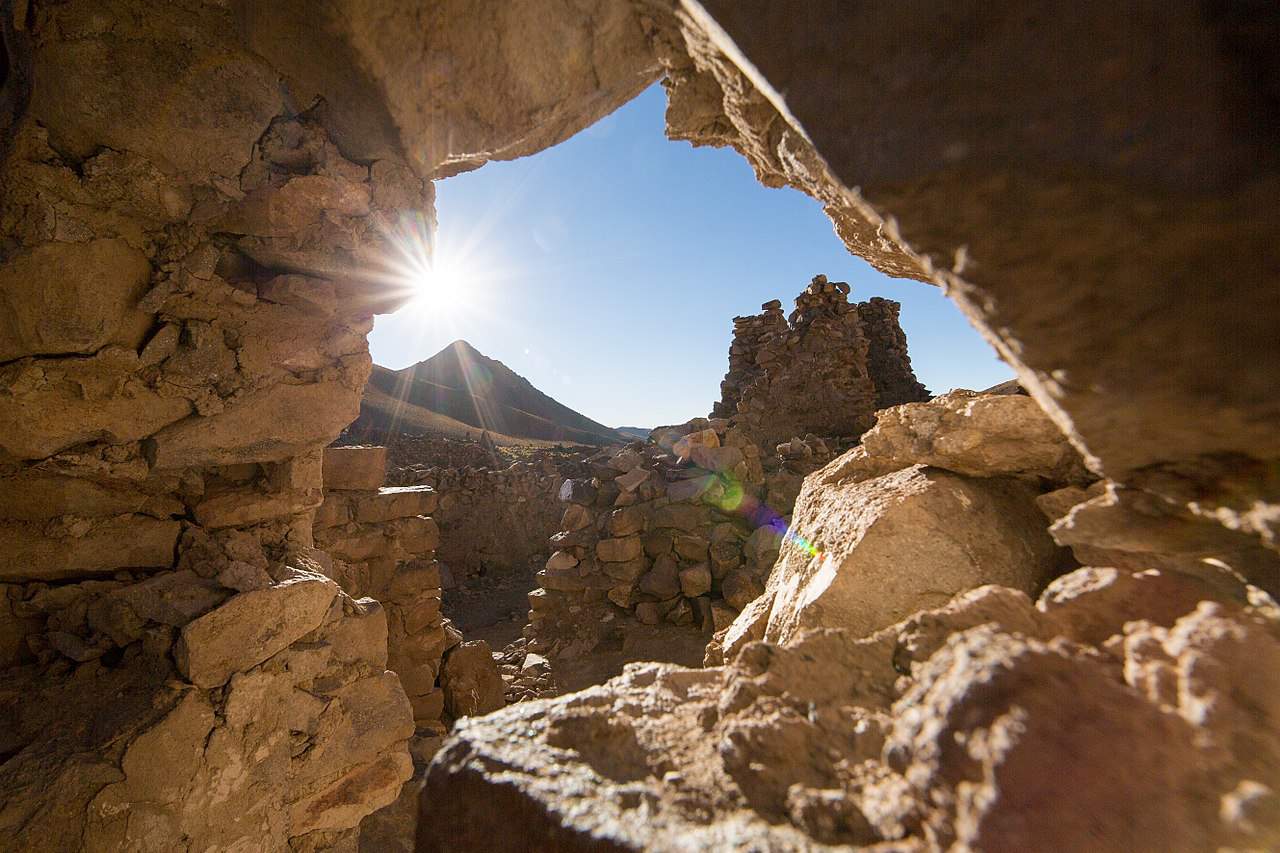
Lake Poopo was once the second-largest lake in Bolivia.
Sadly, Lake Poopo dried up because of climate change. Its location is at 12,000 ft above sea level atop the Andean plains in Bolivia.
A majority of the Altiplano or ‘High Plateau’ lies in Bolivia.
The Altiplano is a part of the Andes, lying between the Cordillera Oriental and the Cordillera Occidental. This flat-floored depression stretches 800 km or 500 mi. long and 130 km or 80 mi. wide. Most of the Altiplano lies in Bolivia, but its northern parts stretch to Peru, and its southern parts reach Chile and Argentina.
Bolivia is home to the highest forest in the world.
The Sajama National Park in Bolivia sits at a height of 3,900 meters above sea level.
Lake Titicaca is the highest navigable lake in the world.
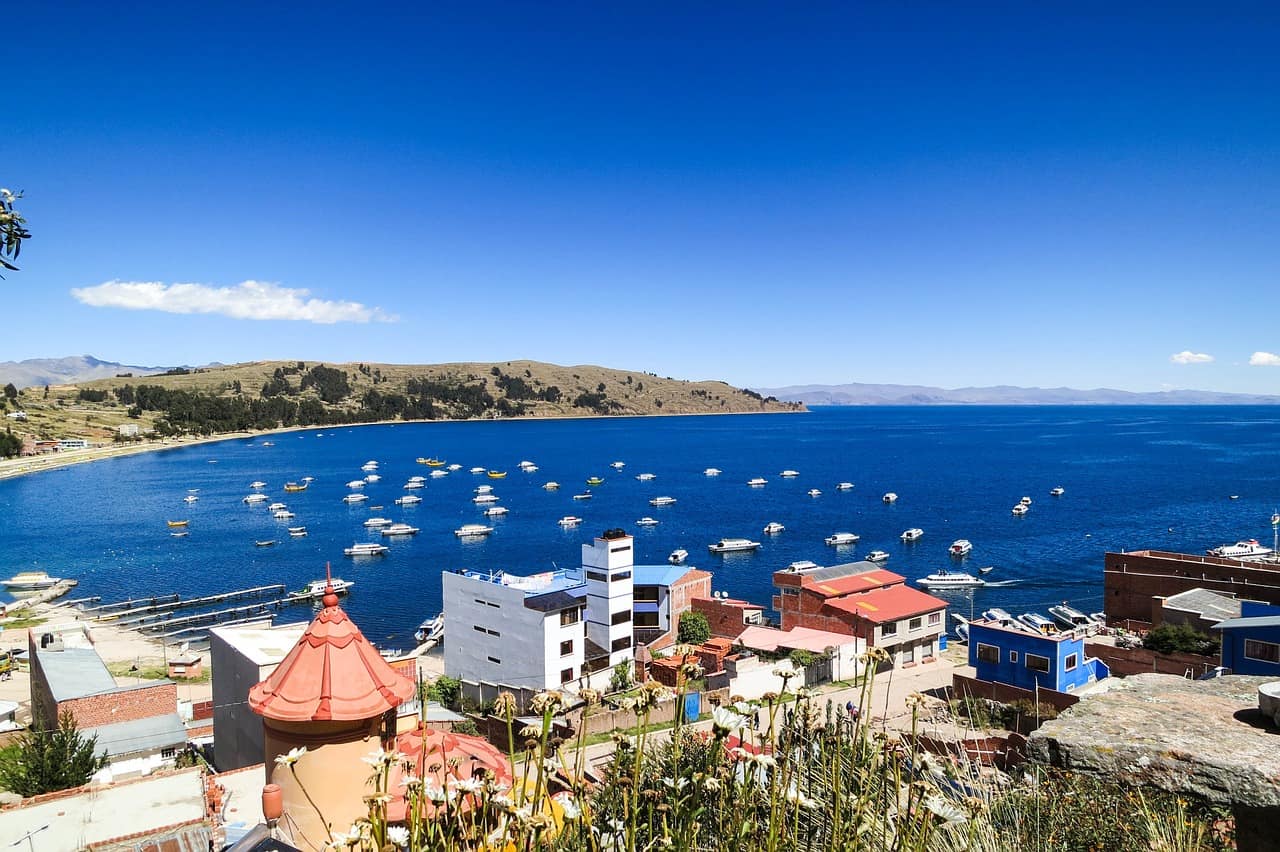
Shared by Bolivia and Peru, Lake Titicaca is only second to Lake Maracaibo in being the largest lake in South America. Lake Titicaca stands at 3,810 m or 12,507 ft above sea level. Furthermore, it covers a surface area of 8,300 sq km.
Potosí, a city in Bolivia, is a UNESCO World Heritage site.
Because it preserved colonial architecture, the city became a UNESCO Heritage Site in 1987.
Bolivia’s population is divided into 3 main groups.
They are the indigenous people, the mestizos or the ones with mixed descent, and the Europeans or those that are mainly Spanish.
President Evo Morales was the first indigenous person to be elected as president of Bolivia.
The former president was the first member of the indigenous majority to hold office. He was elected in December 2005 and stayed in power until November 2019.
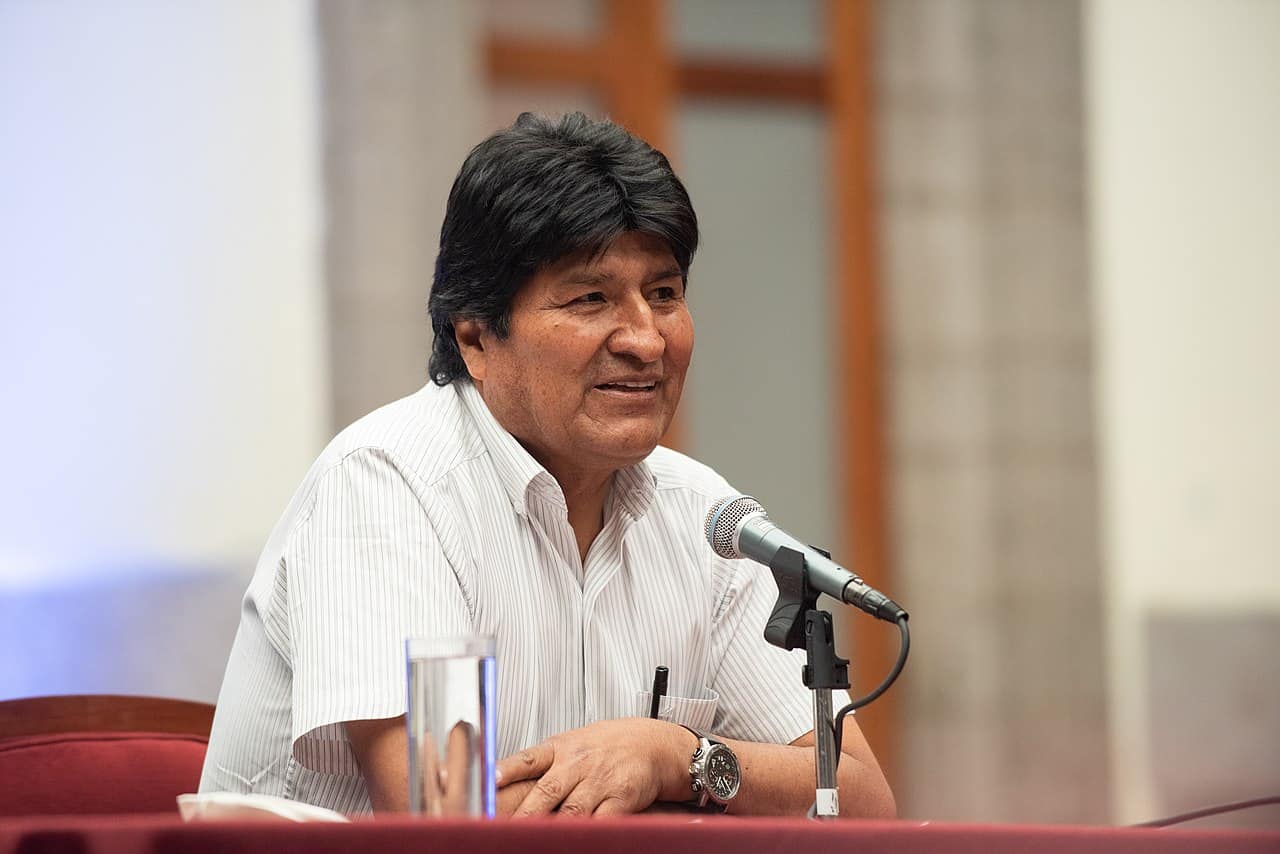
There are famous people from Bolivia in the sports and acting field.
Tennis player Maria Fernanda Álvarez, runner Geovana Irusta, and soccer player Marco Antonio Etcheverry are from Bolivia. The country also boasts of the actors Reynaldo Pacheco, Raquel Welch, and Eduardo Hoffmann.
Bolivia was also home to some famous scientists and literature professionals.
Noel Kempff Mercado, José Steinbach, Martín Cárdenas and Iván Guzmán de Rojas are some notable scientists from Bolivia. Literature writers Edmundo Paz Soldán, Giovanna Rivero, Adolfo Costa du Rels hail from the South American country as well.
In Bolivia, zebra help people cross the streets of La Paz.
These ‘zebras’ are actually people dressed in zebra costumes, but it’s still one for cool Bolivia facts. The zebras help children cross the road carefully and teaches them road safety.
The legal voting age in Bolivia depends on marital status.
Married people can vote at 18, while single people can only vote at 21. Now that’s one for interesting Bolivia facts.
Bolivia used to be part of the Inca empire.
The country used to be the center of the ancient Tiahuanaco or ‘Tiwanaku’ empire. As part of the Inca empire, it lasted from the 15th century up to the early 16th century.
The Viceroyalty of Peru represented Bolivia when the conquistadores arrived.
Spain gained immense wealth in silver from the encounter.
A president holds executive power in the Bolivian government.
Popular vote would elect a candidate for a 5-year term in the position. In January 2009, Bolivia approved a new constitution allowing the president to serve another consecutive 5-year term.
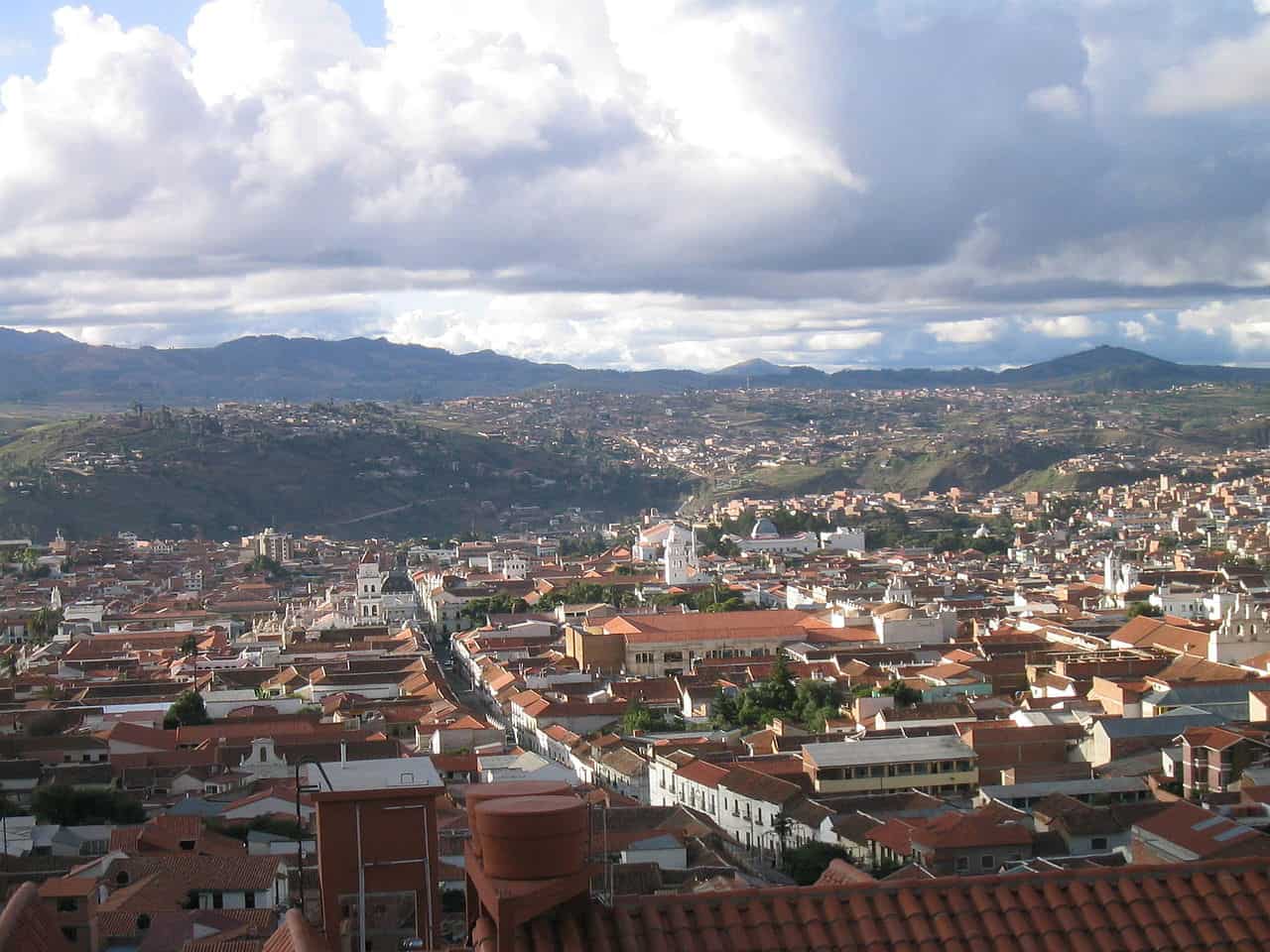
The Bolivian government also has a bicameral legislature.
Bolivia’s bicameral legislature consists of a Chamber of Senators with 36 members and a Chamber of Deputies with 130 members. All the legislature members serve 5-year terms after their direct election.
A Supreme Court and a Constitutional Tribunal head the judicial system of Bolivia.
The Supreme Court has 12 members, while the Constitutional Tribunal has 5 members. Moreover, they decide over law constitutionality and resolve any conflicts among the branches and levels of government.
Bolivia is divided into 9 departments.
The president appoints a prefect to govern each of the 9 departments.
Departments are further divided into provincias.
A subprefect governs each provincia, but they are also subdivided into cantones governed by corregidores.
The flag of Bolivia was only officially adopted on October 31, 1851.
It features 3 horizontal stripes. The top stripe is red, the middle is yellow, while the bottom is green. Moreover, the yellow stripe features the coat of arms of Bolivia right in the center of the flag.
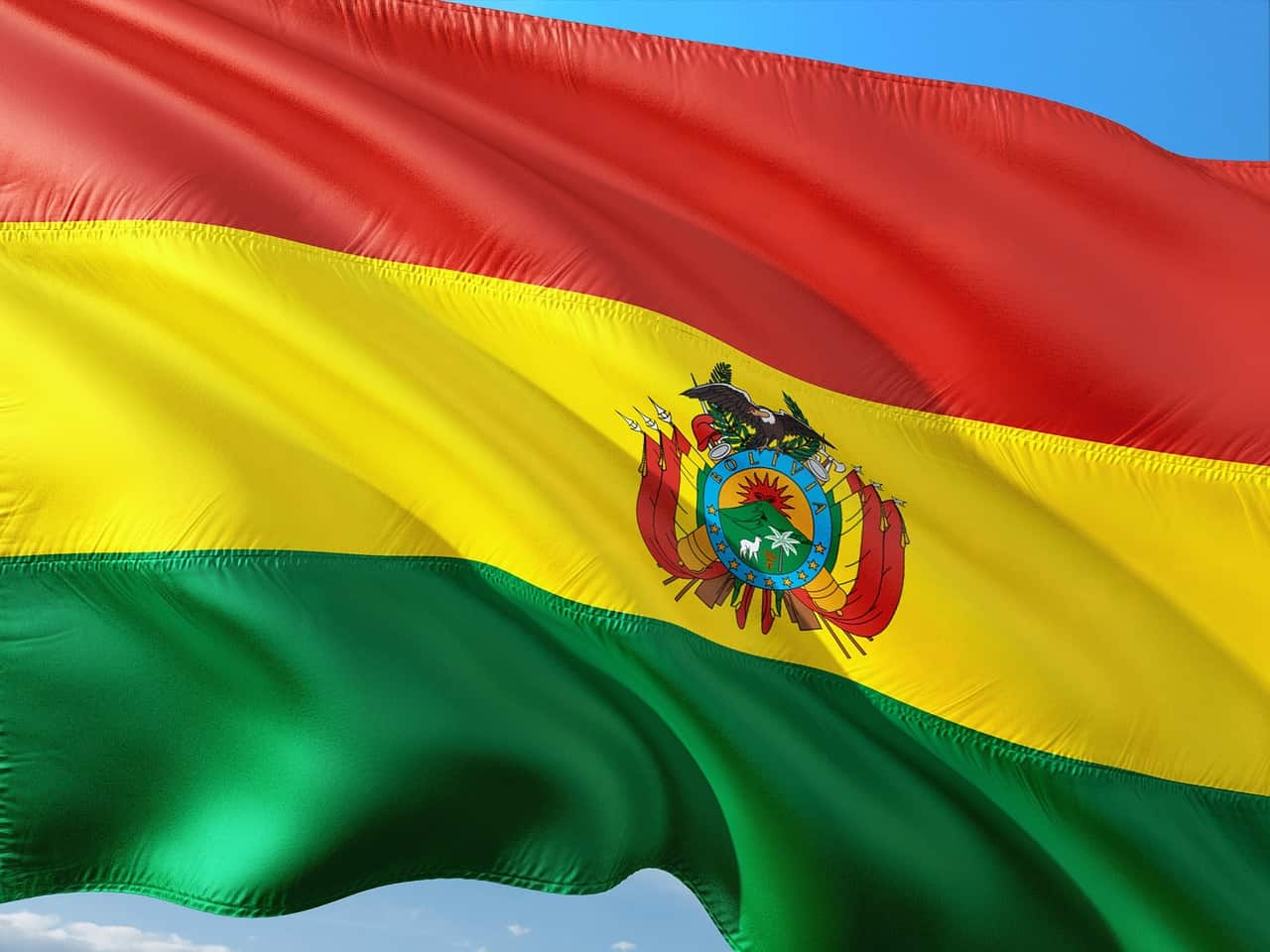
Each color in the flag of Bolivia has a meaning.
Red symbolizes the bloodshed from the fight for independence. Yellow represents the wealth and mineral deposits of Bolivia. Meanwhile, green stands for the agriculture and environment of the country. How’s that for Bolivia facts?
Families are the core of Bolivia culture.
It is traditional for multiple generations of families to live together under a single roof. Men are the predominant breadwinners of society while women focus on household work.
After marriage, the wife takes after the husband's surname, prefixed by "de."
For example, Maria Mercedes Lopez marries Manuel Paolo Costa. Her name would then be ‘Maria Mercedes de Costa.’
Bolivia culture treasures honesty.
Among the other values dearly kept by the country are gentleness, kindness, and concern for one another’s welfare.
Traditional clothing in Bolivia consists of multilayered skirts called polleras and colorful shawls.
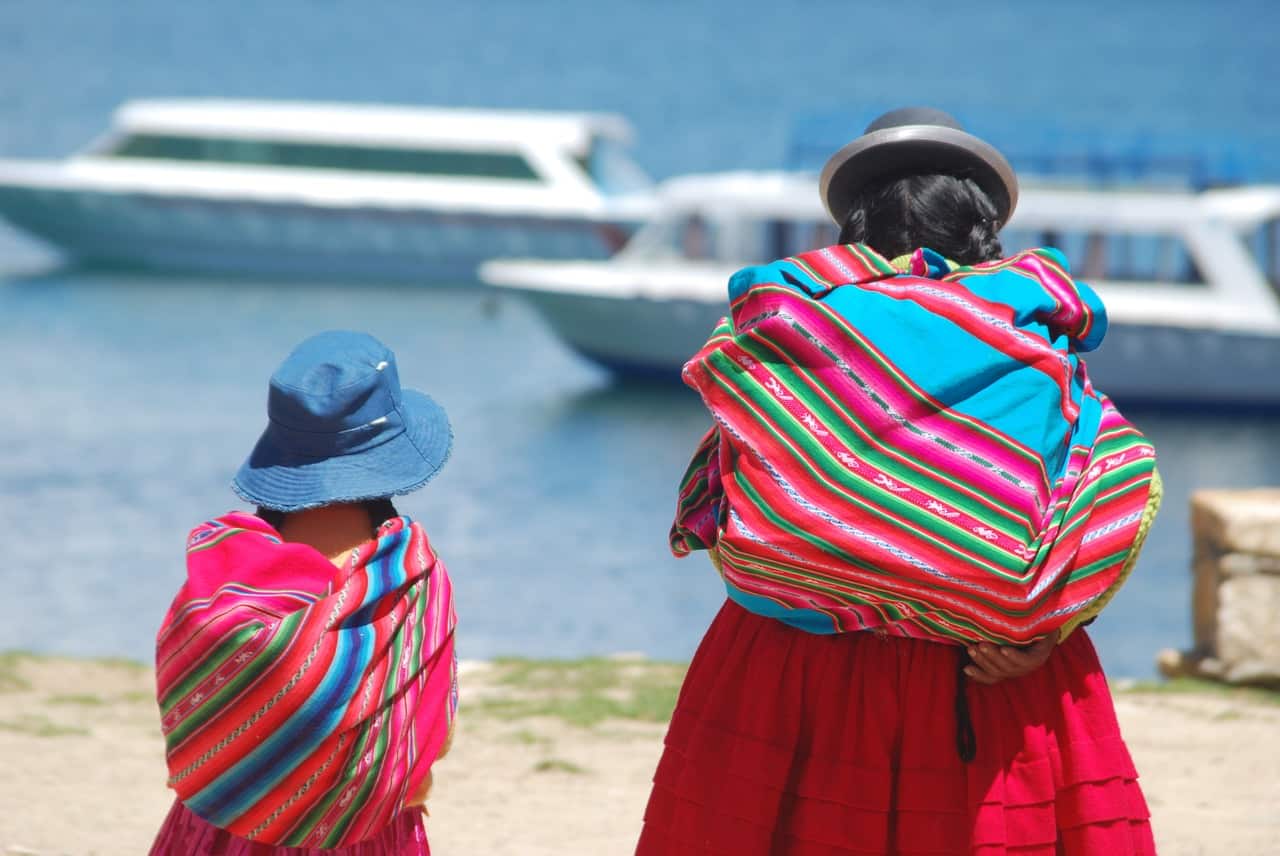
The pollera and manta are Bolivia’s traditional clothing, borrowed from Andean culture. Manta shawls are multipurpose, as people also use them to hold goods, extra clothing, or even a baby. The pollera skirt used to be a dress that Spanish officials would force Spanish people to wear.
Hats are also traditional in Bolivia.
In Quechua, Tarabuco, single women go for woolen hats, while leather hats are worn by married women. The hats vary in style and sizes that denote a citizen’s status.
Dead animals are commonly sold on the streets of Bolivia.
Bolivia’s dead animal trade includes dried llama fetuses, which citizens use as offerings to Mother Nature. The people of Bolivia traditionally offer them to ‘Pachamama’ in return for the blessings that they receive.
Bolivian cuisine features potatoes heavily.
Historically, the people of South America have been known to rely on root crops such as corn and potatoes. The typical Bolivian diet consists of rice, soup, potatoes, fruits, and milk products.
Cocoa is a super food for Bolivians.
Bolivians eat cocoa to fight the effects of altitude sickness common in the highlands. Hence, most Bolivians have an evident bulge in their cheeks.
Bolivia’s economy gains from the country’s rich resource.
The country exports natural gas to Argentina and Brazil. However, Bolivia remains among the least-developed Latin American countries due to state-oriented policies that hinder investments.
70% of the world's Brazil nut supply comes from Bolivia.
It may sound ironic, but most Brazil nuts come from Bolivia. The country exports around 25 million tonnes of Brazil nuts to Brazil, the U.S., and Europe.
In 2017, Bolivia ranked 95th in the countries with the largest export economy.
Among the country’s top exports are gold, lead, natural gas, quinoa, silver, soybeans, soy products, tin, and zinc. Bolivia also imports iron, machinery, petroleum products, plastics, steel, and vehicles.
In South America, Bolivia holds the second-largest natural gas reserves.
However, Russia holds around ¼ of the recognized gas reserves in the world. Other countries that rank for the largest natural gas reserves are Iran, Saudi Arabia, Qatar, and the U.S.
The llama reigns as the largest animal on the Bolivia Altiplano.
This animal also serves as a source of meat, fuel in form of dried dung, leather, tallow, and wool in the rural communities of the Andes.
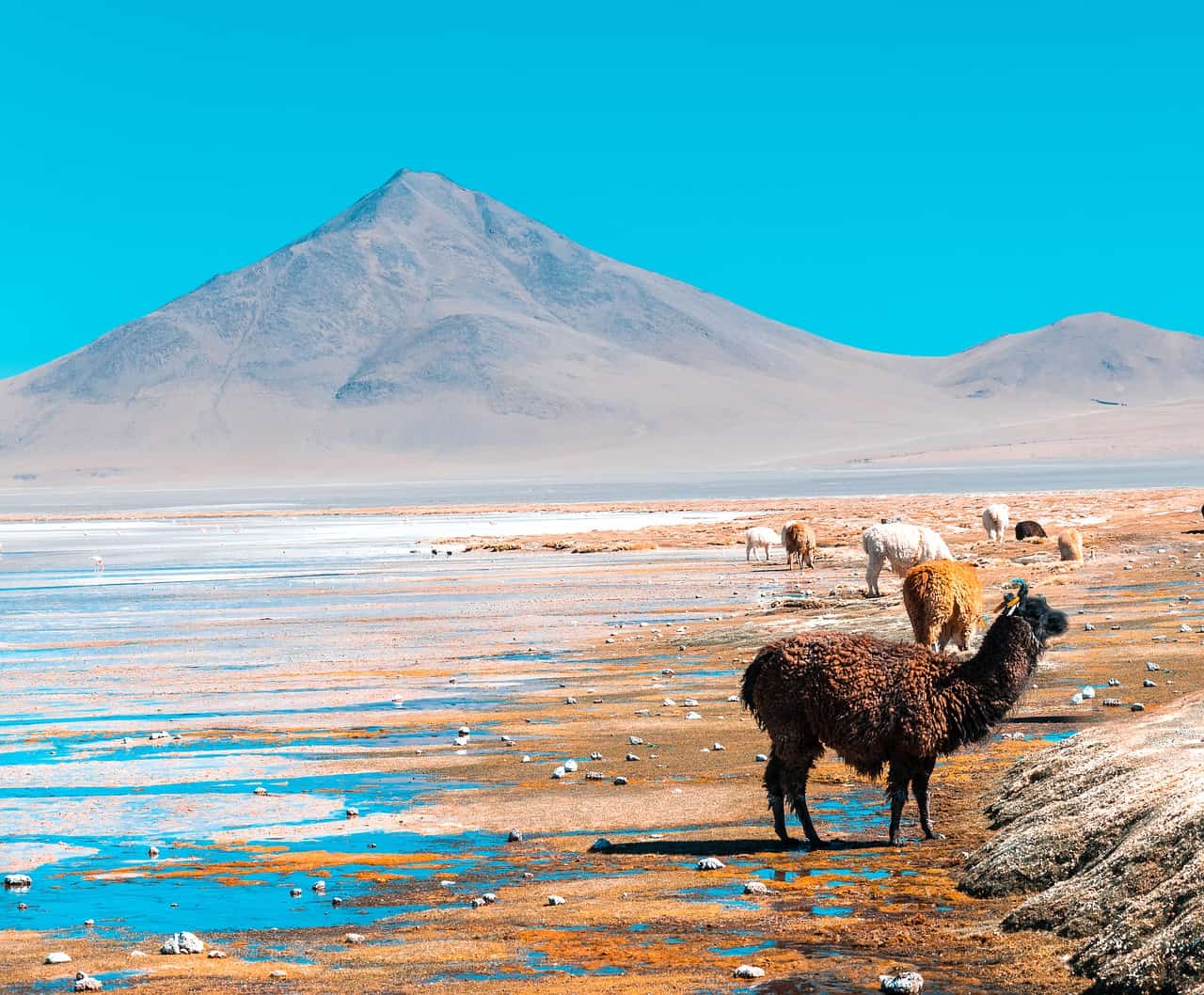
Bolivia is home to the largest butterfly sanctuary in the world.
Located around 20 minutes from downtown Santa Cruz, the 24-hectare sanctuary is one of the famous Bolivia landmarks. It is open for all days of the year.
Bolivia covers a part of the Amazon forest in the Madidi National Park.
The park covers 18,958 sq km and is one of the world’s largest protected areas. Scientists estimate around 9,000-11,000 species residing in the area, with some still undiscovered.
Cal Orko in Bolivia features 5,055 footprints from 8 dinosaurs species.
The monumental limestone slab measures 1.5 km long and 80 m high. Imprinted on a vertical wall, the fossil marks are at least 68 million years old.
Bolivia is home to the largest salt flat in the world.
Also known as the Largest Mirror on Earth, the Salar de Uyuni covers a total area of 10,582 sq km at 3,656 m above sea level. It is around 100x larger than Utah’s famous Bonneville Salt Flats.
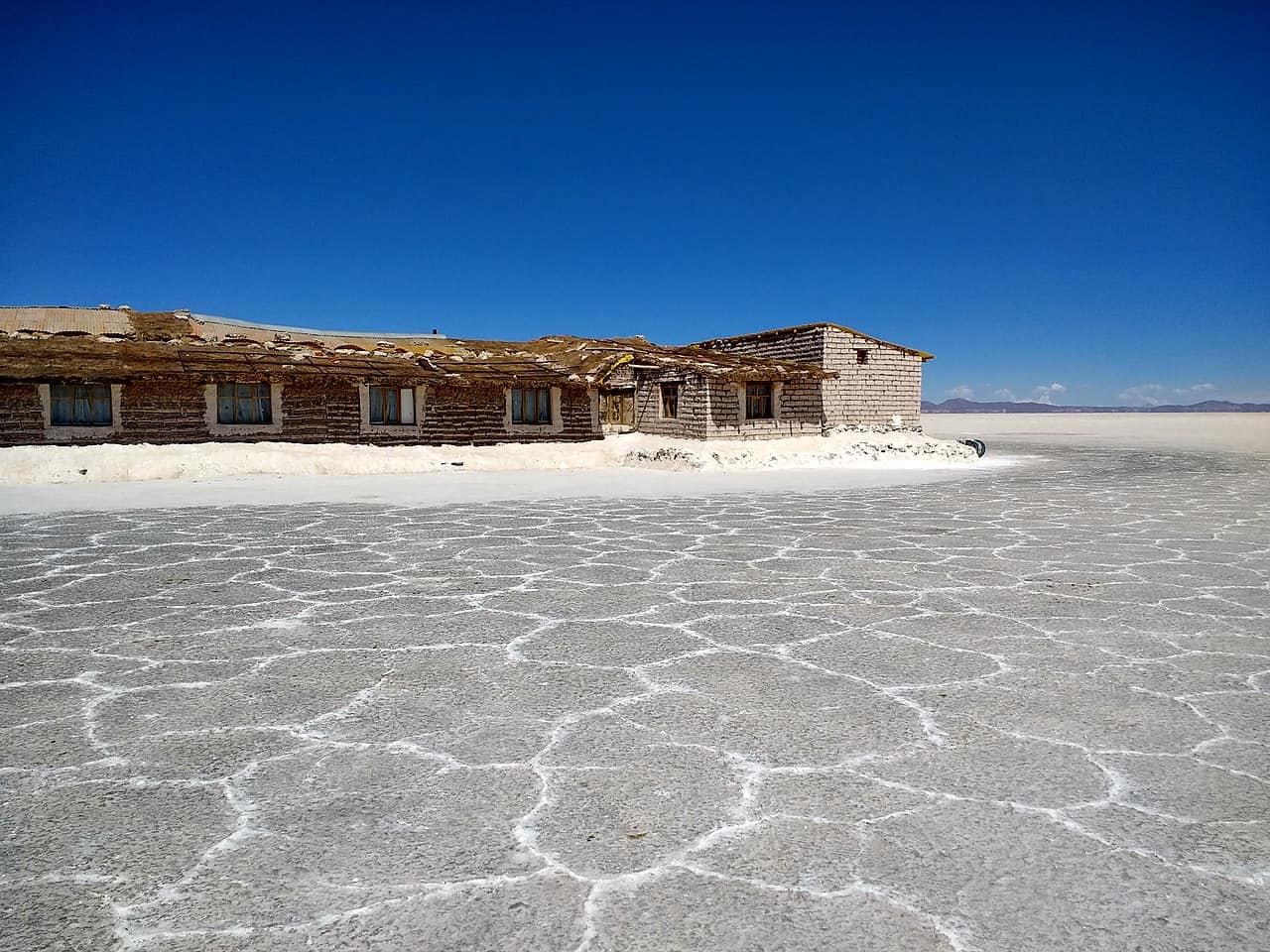
The Salar de Uyuni in Bolivia holds 50-70% of the lithium reserves of the world.
This salt desert is so clear that observation satellites calibrate their altimeters on the salt desert. The Salar de Uyuni’s large area, clear skies, and extraordinary flatness provide the perfect conditions for a satellite’s recalibration. Hence, it is one of the most notable Bolivia landmarks.
Bolivia’s Salar de Uyuni also houses the Palacio de Sal or Palace of Salt.
From the name itself, the Palacio de Sal is a structure made entirely of salt. Built from 1993 to 1995, the Palace used 1 million 35-cm blocks of salt for its floors, walls, and ceiling. The same materials formed its furnishings, including beds, chairs, tables, and sculptures.
The Hotel Luna Salad is similar to the Palace of Salt.
Another hotel in Bolivia, Hotel Luna Salad also made use of salt blocks in the construction of its interior and furniture.
San Pedro Prison was a famous landmark in Bolivia.
San Pedro Prison used to accommodate tourists until they had to close their doors due to violence committed by inmates against visitors. Moreover, this prison is unique in a way that it allows the inmates to live with their families inside the premises.
Bolivia is home to the most dangerous road in the world.
The Camino de las Yungas Road is also branded as the Death Road or the Road of Fate. Each year, around 200-300 people fall to their deaths from the 56-km long road. Improvements made to the road include putting markings on the spots where vehicles have fallen.
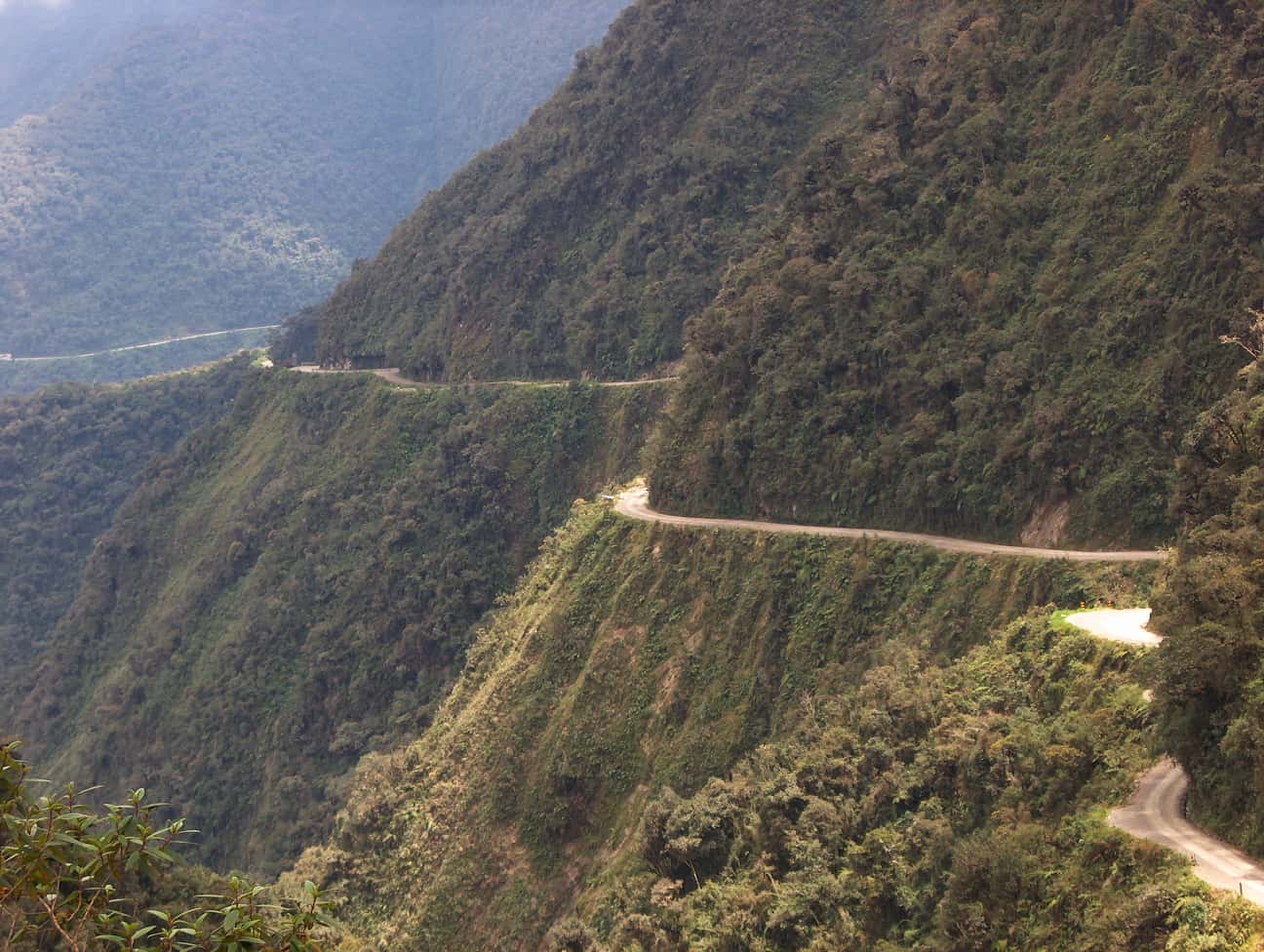
Soccer is the most popular sport in Bolivia.
When their national team ranked 2nd at the 1997 South American Championship, Bolivia started to gain international recognition in the field.
The Oruro is the most important folk celebration in Bolivia.
The Oruro is held during the Carnival holidays which comes before Lent. During the festival, there are competitions for numerous indigenous musical and dance groups, and a grand display of decorations and costumes.
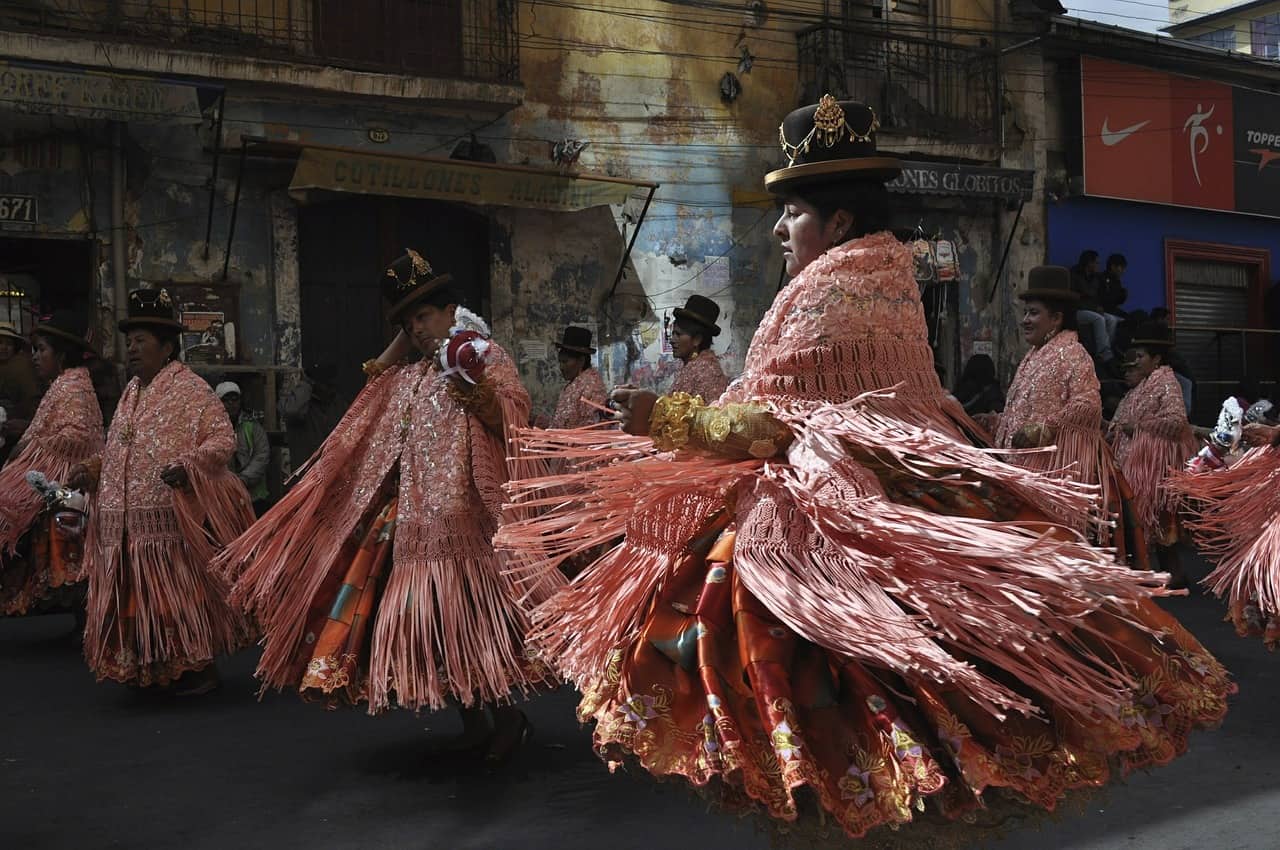
The Great Power or Gran Poder festival is another religious practice in Bolivia.
La Paz observes the celebration every May in honor of the Virgin of Urkupina in Cochabamba.
Roman Catholics make up over ¾ of the population of Bolivia.
However, the proportion of religion has already decreased slowly over the years.
By the late 20th century, Protestant denominations became prolific in Bolivia.
Aside from the notable Evangelical churches, other beliefs that had increased followers are the Bahāʾīs and Mormons. A small Jewish community also resides in Bolivia.
Was this page helpful?
Our commitment to delivering trustworthy and engaging content is at the heart of what we do. Each fact on our site is contributed by real users like you, bringing a wealth of diverse insights and information. To ensure the highest standards of accuracy and reliability, our dedicated editors meticulously review each submission. This process guarantees that the facts we share are not only fascinating but also credible. Trust in our commitment to quality and authenticity as you explore and learn with us.
